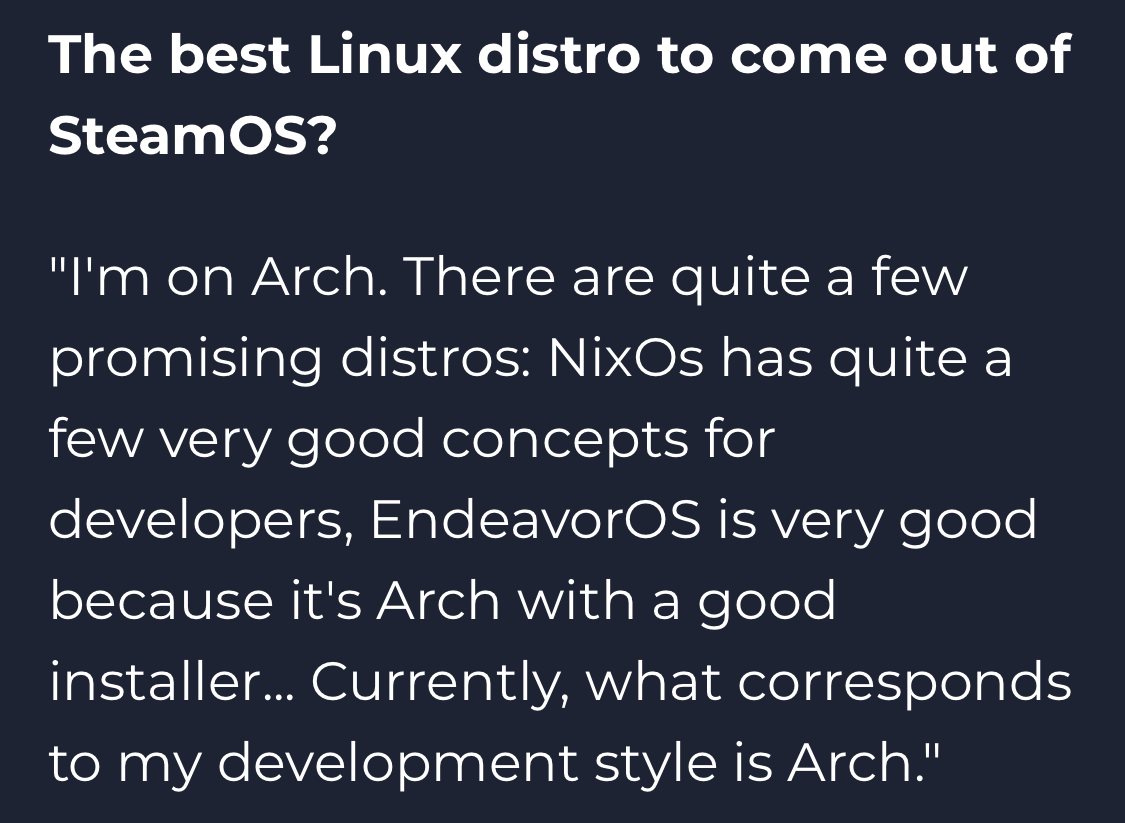 Uhm, btw ^^
Uhm, btw ^^While the Steam Deck is a huge success, the portable console truly owes its appeal to SteamOS, the operating system developed under Linux. We were able to speak with Pierre-Loup Griffais, one of the Valve developers dedicated to this extraordinary project.
If you’ve been happily using your Steam Deck for the past few months, you owe it in part to this man. Pierre-Loup Griffais is one of the developers in charge of SteamOS, the operating system that powers Valve’s portable console and allows it to be as easy to use as a traditional console. Present at CES 2025 to accompany the release of the new Legion Go S, the first device “Powered by SteamOS”, the developer was pleased to answer our questions to look back on the past of the OS, establish its short-term plans, but also talk about its future. What did you do in the development of SteamOS? “For us, this is a long-standing initiative. And at CES, it’s a return to our beginnings when we were here in 2013 to announce the first version with the first hardware partners. Today, we’ve come a long way behind the scenes.” “I’ve been personally busy managing this, since the creation of SteamOS in 2012. In the meantime, we developed Proton to increase compatibility, and then the Steam Deck with SteamOS 3.0. Since the release of the Steam Deck OLED, we’ve done a lot of work to expand the compatibility of SteamOS.”
ROG Ally, Legion S… Is this just the beginning? “All of this work is broadly applicable to the PC platform, and it’s going to continue to expand over time. Supporting multiple platforms, multiple chipsets, controllers for different machines that are out there and even ones that aren’t out yet. It aligns pretty well with what we were already doing. Here, Lenovo approached us because they were working on their new product and were looking to improve the software experience.” Console ergonomics in the PC universe, the great mark of SteamOS 3 “There’s been a lot of feedback from the press and users since SteamOS 3 came out that SteamOS is very well-suited to these new console formats. We’re excited to bring these improvements, this immediacy, to other products. We’re super excited to bring this experience to all the platforms that exist while still being able to access the desktop, third-party software installation, and the customization that the PC brings.” “This was our goal from the beginning, but our own hardware has kept us busy. Now that the Steam Deck OLED is well underway, we have some time to prioritize this development.”
One of the promises was to release SteamOS for everyone, how difficult is it to release it now? “I think there are a couple of factors. One is that on some platforms, the support is still very basic. Intel, it works a little bit better than before, but our driver teams and Intel are working on it. NVIDIA, the integration of open source drivers is still pretty nascent. There’s still a lot of work to be done on that side… So it’s a little bit complicated to say that we’re going to release this version when most people wouldn’t have a good experience.” “And then there’s the ease of installation. We had an installer for SteamOS 2, but here we started with the Steam Deck so everything came straight out of the box, so the process right now is basic. Unlike some community alternatives that add this layer of installation that accompanies users. We haven’t done that yet.” “It’s just a matter of priorities.” In this label, who takes care of support? The manufacturer, as usual, or Valve, as Chrome OS does?
You’re still basically a PC “There you go! It’s true that thanks to the good reception of the Steam Deck, some developers are giving priority to this kind of development, but everyone benefits in the end.”
It still seems like fun to work on SteamOS, right? “There’s passion behind it, we’re Linux users. But system development is also less fun in some ways than working on a game or something like that. There are advantages and disadvantages.” “The fun is to see where we are, compared to where we were at the time.” You are developing an open source product in a private company that is free for everyone, which is rare. “Yeah, I’m pretty happy that we’ve managed to find a balance that’s beneficial to everyone, while still being able to help this PC ecosystem in this way. I’m really happy about that.”
“We’re kind of in between. There are quite a few drivers that are handled on our side, for example the graphics driver for game support which is very important to us. We don’t want to go through an intermediary so we can fix and optimize games quickly without having to wait for a manufacturer to take care of it.” “Afterwards, the firmware part is more on the manufacturers’ side. For example, BIOS updates are provided by the manufacturers and distributed by SteamOS. It’s a cooperation between the manufacturers and us.”
What are the challenges of switching SteamOS from Steam Deck to Lenovo Legion Go S? “I don’t know if we can talk about difficulty. It’s work, but it’s generally applicable to platforms that already exist and that we already wanted to do so that SteamOS runs everywhere. These consoles are very comparable to laptops, with a few small differences. This work will set up support for other platforms on the market.” “Between now and the release of the Legion Go S, there will be a SteamOS beta update that will incorporate all of this new integration work and allow people to install our operating system on their handheld consoles. Once we have that down pat, at least on the AMD side, we can look to expand even further.” And potentially help other players, like NVIDIA, develop their drivers? “Yes, we already have four developers on the NVIDIA open source driver for example. It’s just that there’s a lot of work to do. On AMD, we started developing the open source driver on our side in 2017, so we had a pretty good head start. But the beauty of this open source model is that a lot of the elements that we’ve put in place or that have been put in place by other players in the community are shared. A lot of work has already been done, and everyone is developing the same code base. It’s a pretty unique model.”
Are the works of Bazzite, ChimeraOS, Nobara also profitable for you? “Sometimes yes. A lot of their work is integration, where they use things that the community has developed to create a much more streamlined installation and support experience than our development trees. But there are also quite a few components that are originally developed by the community that we use. For example, on the Legion Go S, we use a component called Input Plumber to manage the controller.” “We’re not too interested in inventing our own sauce. If something is already done and meets our standards of performance and functionality, we use it.” SteamOS 2 was on Debian, why did you switch to Arch for SteamOS 3? “The change between the two doesn’t really impact the finished product, since the user doesn’t see that part that’s transparent. The choice was for development: Arch was more compatible with our way of doing things, while our team uses it daily. We were using Ubuntu before, and we ended up migrating.” Why did you go so far as to invest money to support the development of Arch? “To support this community. Every time we work on an open source project, we try to promote its development. There are quite a few projects that the Arch community already had that matched what we wanted to do on this project. If we have common goals, and we can help each other, it benefits everyone. They, instead of doing this part-time, can now dedicate themselves to it fully. Our goals are so aligned…” “Ultimately, what we want is for the general OS to become something that can be used for a traditional computer as well as a portable console or any other format.”
Valve Steam Deck Back in the Windows 8 days, Gabe Newell accused Microsoft of killing the PC ecosystem. Is SteamOS the Windows killer developed by Valve? “I don’t think the goal is to have a certain market share, or to push users away from Windows. If a user has a good experience on Windows, there’s no problem. I think it’s interesting to develop a system that has different goals and priorities, and if it becomes a good alternative for a typical desktop user, that’s great. It gives them choice. But it’s not a goal in itself to convert users who already have a good experience.” Is there a roadmap within Valve for the development of SteamOS? “Not really. It’s when we have the time and we get there. Everything is incremental and progressive. With the completion of our hardware, we were able to free up time for SteamOS to open up to other portable consoles. And little by little, it will spread out while many efforts are being made in parallel for the benefit of desktop use. But we don’t operate under a schedule, everything is done little by little.” This is definitely a long term SteamOS project at Valve “It always has been. It started in 2012, and since then it’s been a straight line.”
We still saw SteamOS 2 die with the failure of Steam Machines… “In fact, all the infrastructure we use dates back to that point and has been constantly developed: Steam Input, the Vulkan API, Big Picture… In the end, all the other parts were pretty replaceable. We rarely had to rewrite or start over: the work accumulates. Which means that there were literally 12 years of work to get here, and there are still years of development left to reach our goals.” Are Steam Machines still in sight, or are portables your priority? “Right now, we’re focused on handhelds. But as our work expands our ability to work on other platforms and have a good experience in different form factors… We’ve already done a lot to make these consoles connectable to screens, connectable to a controller…” “We’re not there yet to give priority to a Steam Machine. But in collaboration or internally, it’s an open door to the future.” The best Linux distro to come out of SteamOS? “I’m on Arch. There are quite a few promising distros: NixOs has quite a few very good concepts for developers, EndeavorOS is very good because it’s Arch with a good installer… Currently, what corresponds to my development style is Arch.” Major events in 2025 for Steam or Valve in general? “Nothing specific that I can reveal. But between now and the release of the Legion Go S, there will be SteamOS beta updates that will contain work to support these expanded platforms.”
There are doubts about the future of SteamOS, especially because of anti-cheats that block games. How is this situation experienced internally? “I think the anti-cheat problem is very different from our approach to compatibility [through Proton]. It’s fundamentally something that requires constant support. So if developers can’t provide that support because their SteamOS audience is limited, that’s a pretty natural thing to do. It’s not just that they forgot to check a box or something; they want to be able to respond to issues, so they need to have an infrastructure.” “It’s a dynamic that will flatten out over time. The games in question, like competitive shooters, etc., aren’t the best on mobile anyway. If there are more and more users one day, developers might allocate more time to this medium.” “Developers always prioritize user numbers. On our side, we try to put everything in place so that it is possible for them to develop the support they need, but the decision will come from them. I’m not too worried about it: I think things are underway so that it happens as it should.” Between the release of the Steam Deck and its current popularity, do publishers and developers view the console differently? “More and more games are integrating Steam Deck support, including different default graphics settings. Ultimately, the way the support is set up is that the developer doesn’t really have to worry about it. In fact, most of the changes we’re seeing are more and more games integrating accessibility features (performance, UI), and these are changes that benefit the entire PC ecosystem.”
Pretty sure I remember this guy on a Linux gaming discord server a couple of years before Steam Deck released asking people who were gaming on low end PCs how well things were working for them.
Looking back, I think I know what that was about now.
For anyone who knows some French, you’re probably better off reading the original article - the language used isn’t that complex.
For those that don’t read french, just know that this guy’s name translates to Rock-Wolf
I only play games in my living room. I can’t stand Big Picture mode. It’s awkward and has a lot of useless stuff in it. Just make the regular UI controller usable, Valve. That’s all you need to do. There’s no reason to have two different UIs.
Is this a new version of BP though?
Edit: looks like they have changed it a little. It’s definitely more useable. But there doesn’t seem to be a way to access the workshop. Why is everything so freaking big? Do they not know that TVs aren’t CRT anymore? They don’t need giant icons for everything anymore.Edit2: Big picture doesn’t show nonsteam games. Not using it. Half my games are not from steam.
There’s a tab for non-steam games in Big Picture.
I didn’t see it. I’ll check it out some other time. All the other issues with it still remain though.
Valve completely redesigned Big Picture Mode for Steam Deck and SteamOS. They’ve been porting those changes over to Desktop Steam and even changing Desktop Steam’s UI slowly to match and make everything more consistant.
Non-Steam Games:
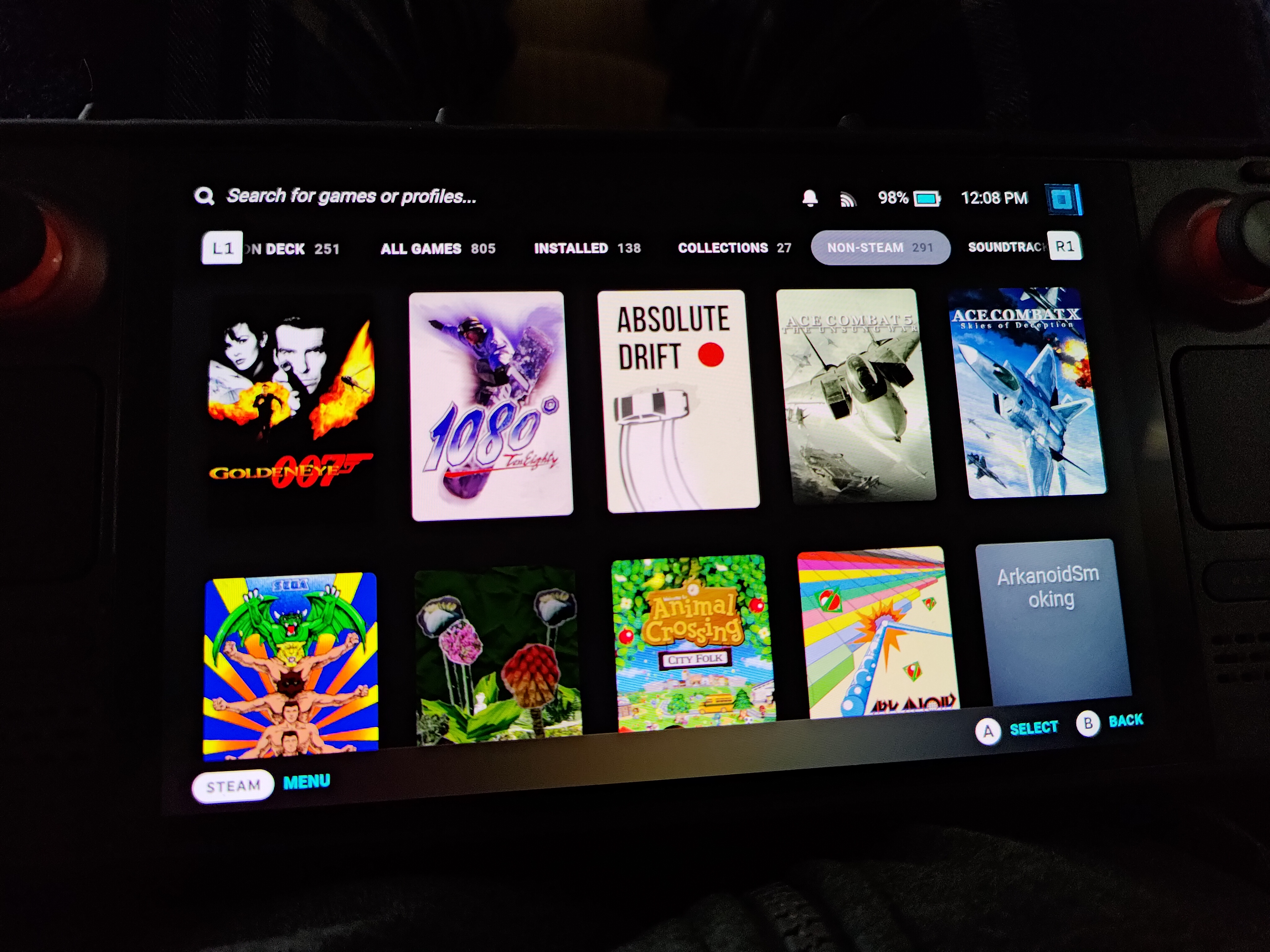
Steam Workshop:
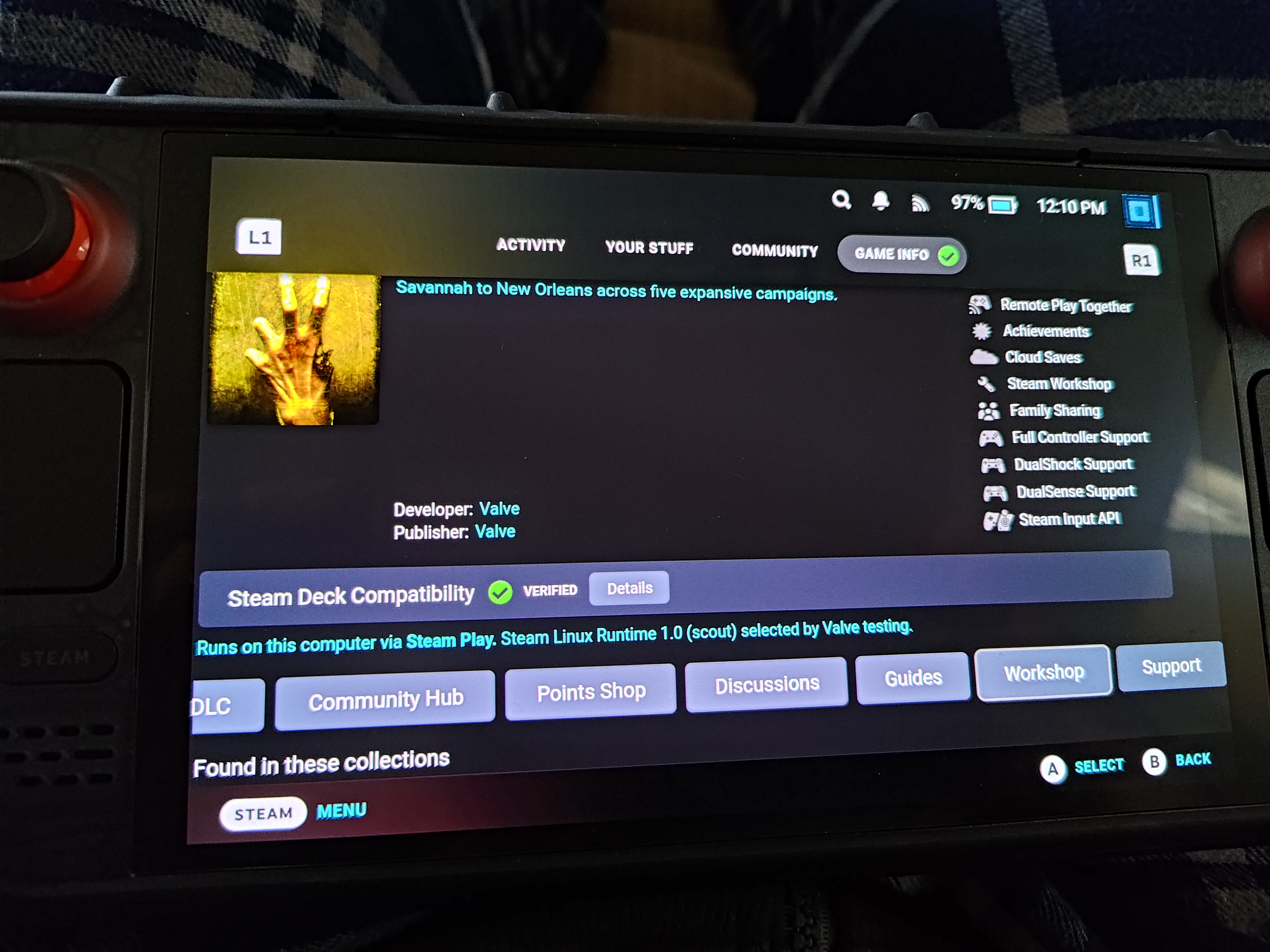
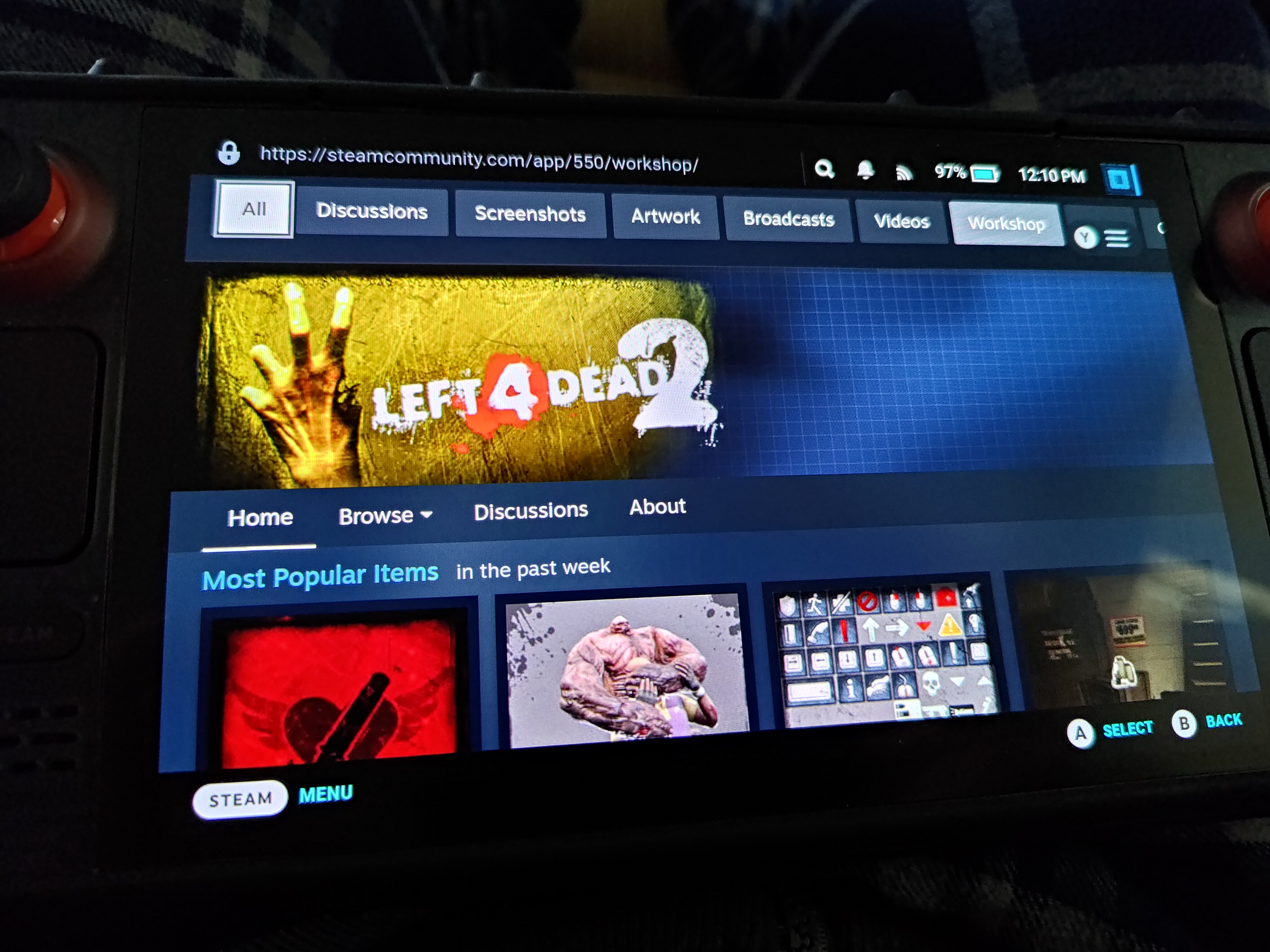
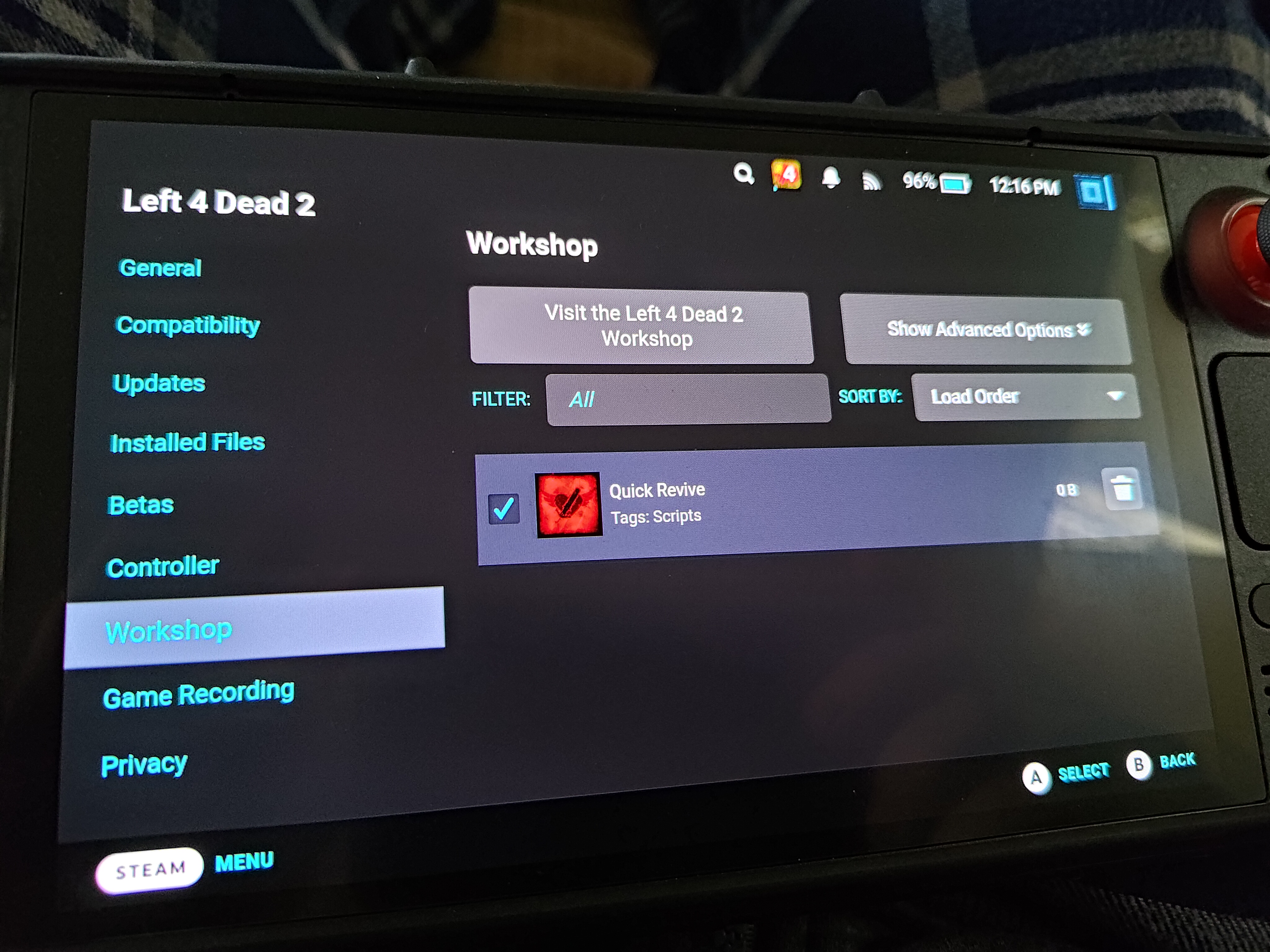
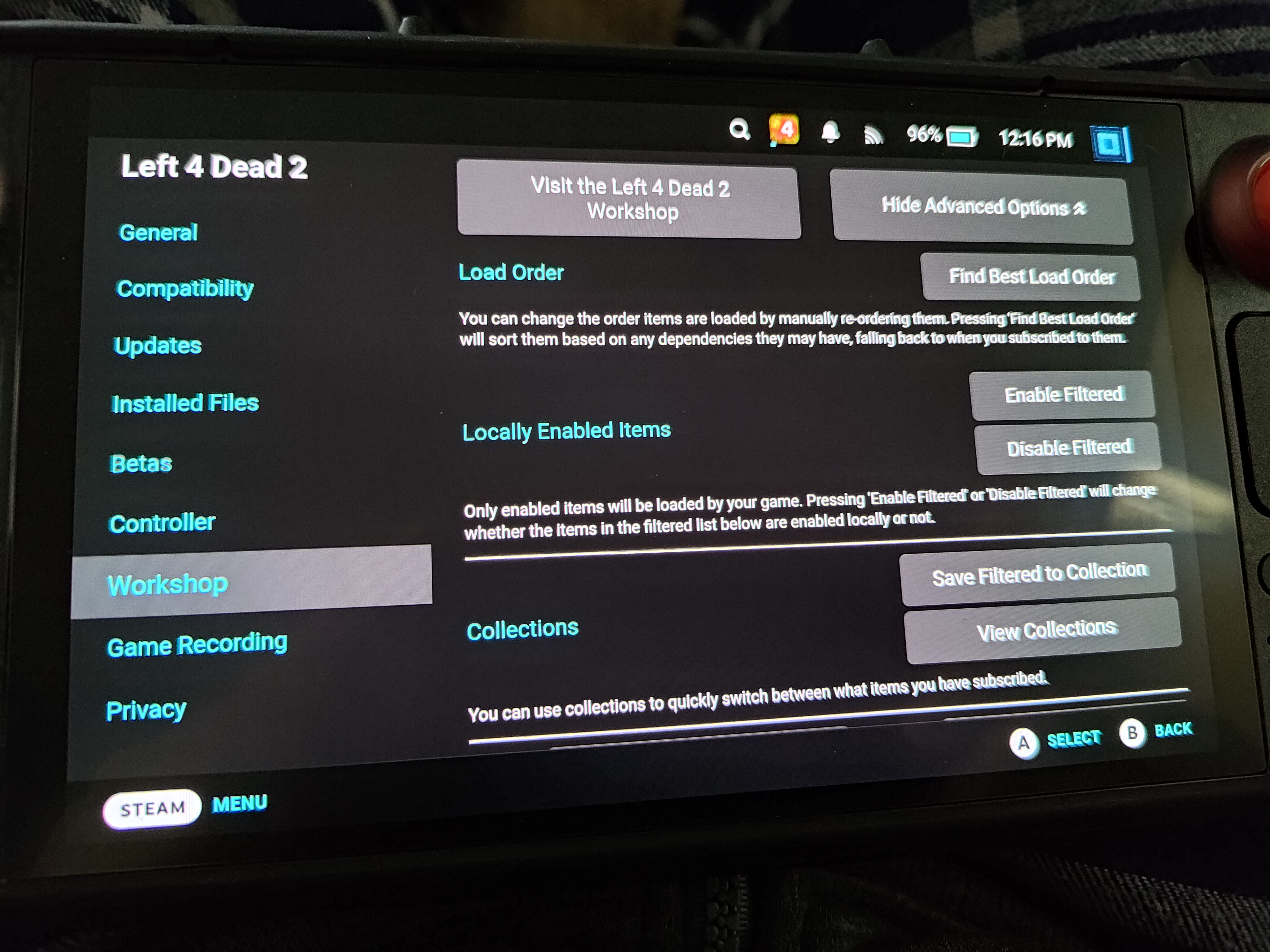
Disclaimer: I have a theme mod installed which changes the color of some elements. Layout is the same though.
Interesting. Guess it’s not on desktop.
Not sure what’s not on Desktop for you. I’m on the Steam Desktop Beta and this all shows up on my Desktop Big Picture.
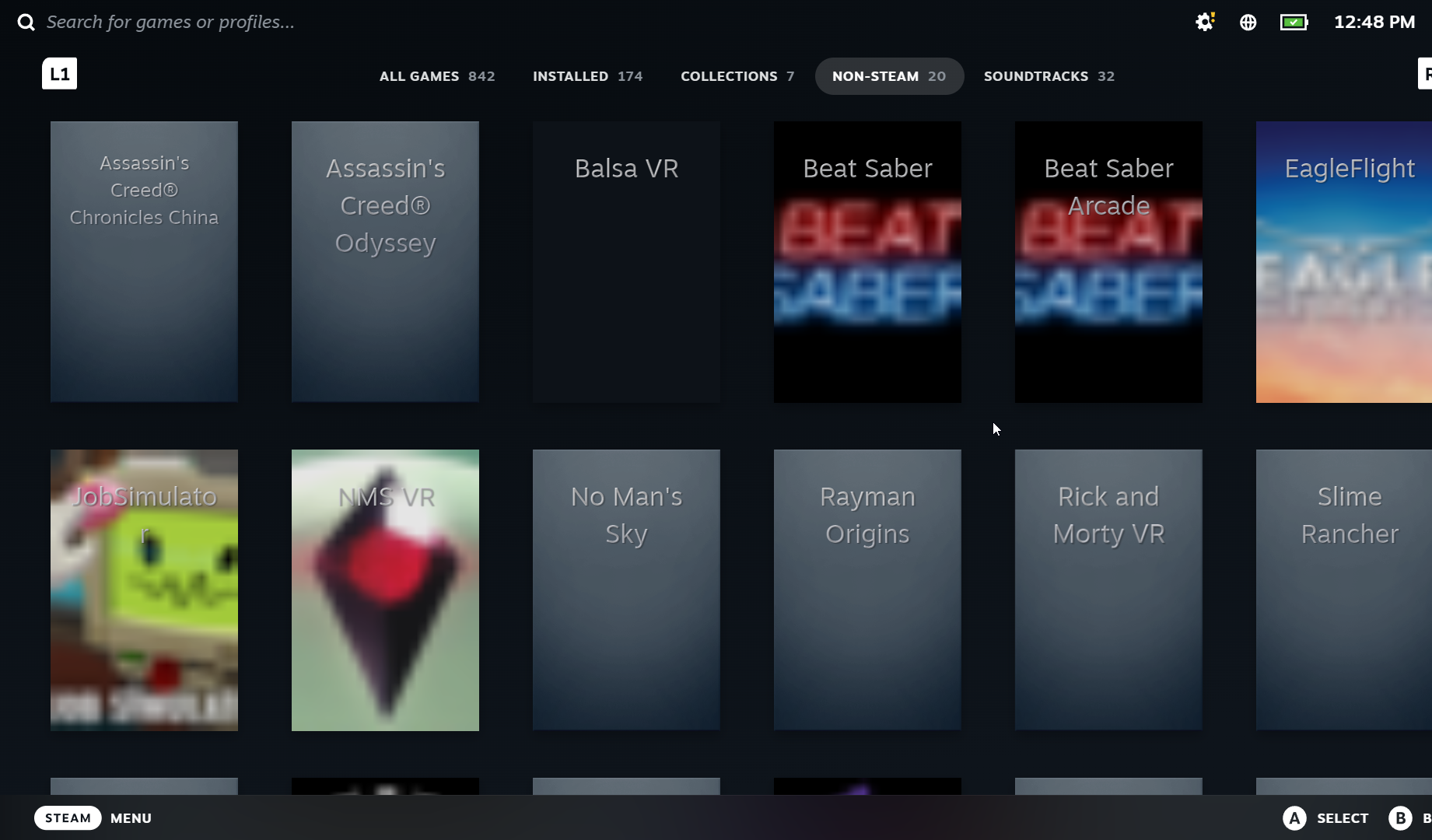
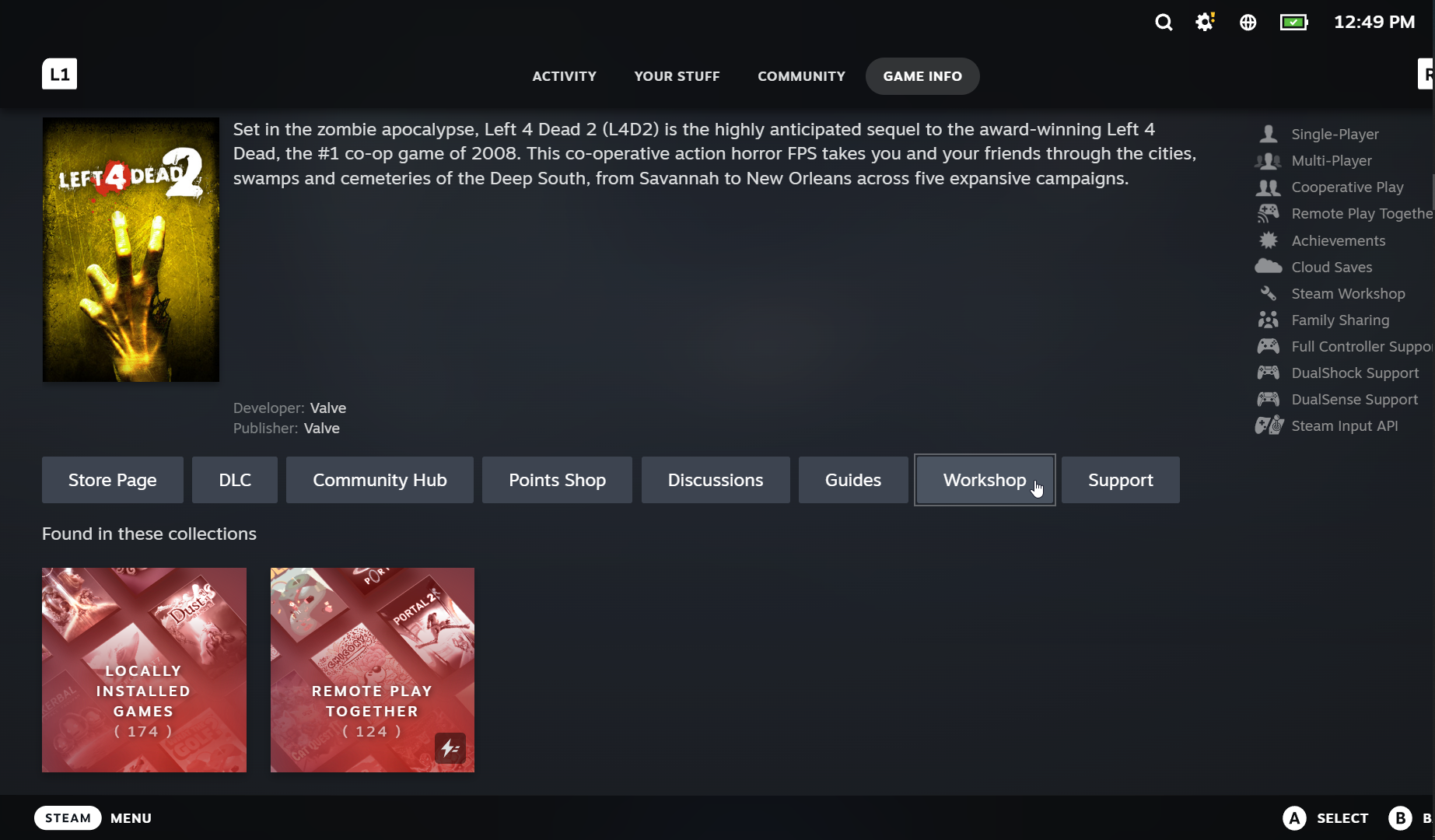
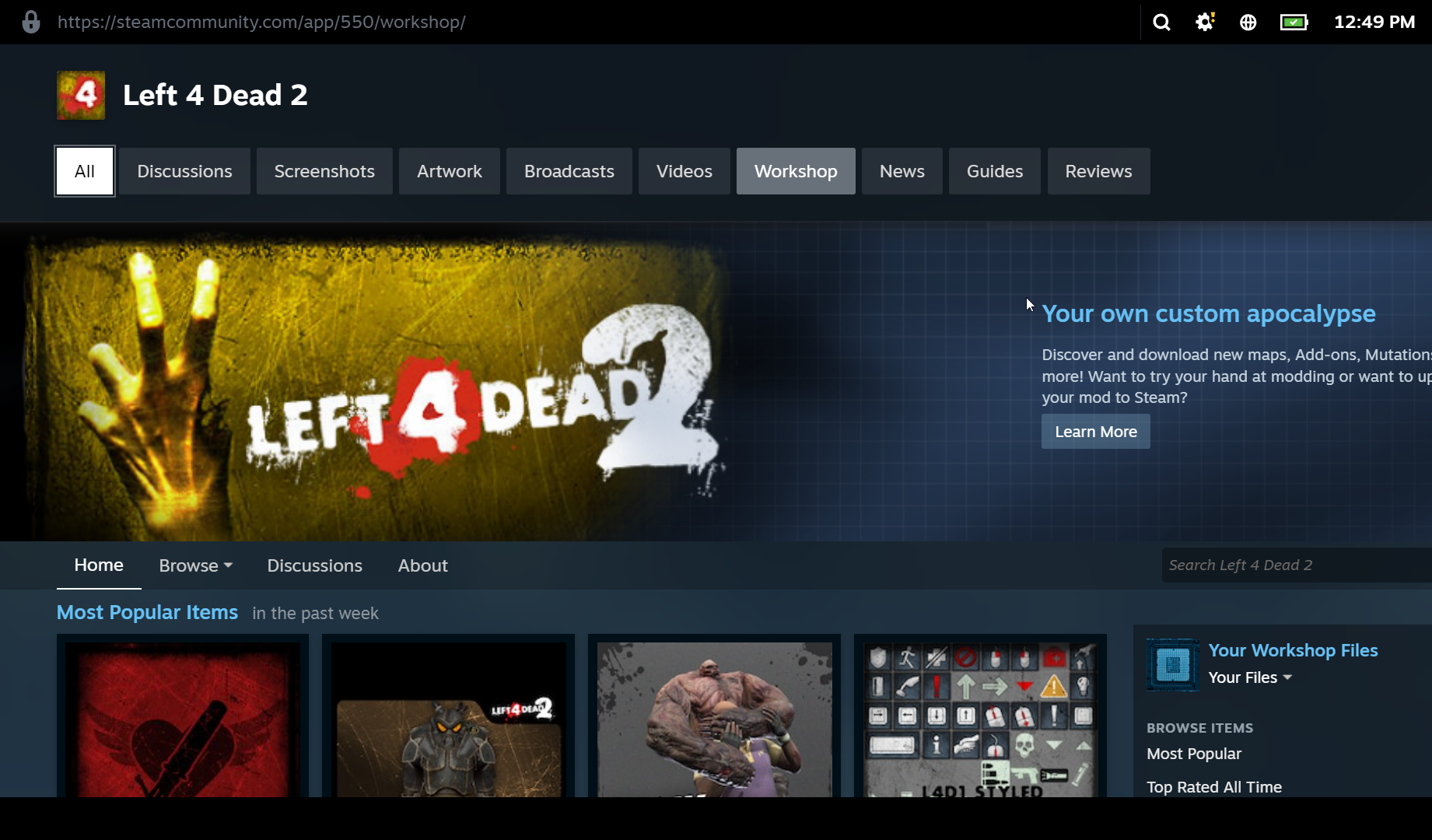

PS: These screenshots were made on a Windows PC which is why the Compatibility tab isn’t in the Game settings.
You answered your own question. You’re using a beta version.
Yeah, but they’re coming to Desktop stable soon. Or you can switch to Beta and try them out. It’s up to you. Just wanted to show that Valve is addressing the issues with Big Picture Mode.
I’m happy they are. I might actually use it. Thank you
In case it is helpful: Big Picture Mode does show non-Steam games. Go to the library and there is a tab for them. They’ll also show in the recent games list on the home page.
DPI scaling of the regular steam GUI can also be wonky if you have different monitors. For example, I mainly use steam on my lower DPI secondary monitor, but it wanted to scale based on my 4k main one. Could be fixed with an override though.





